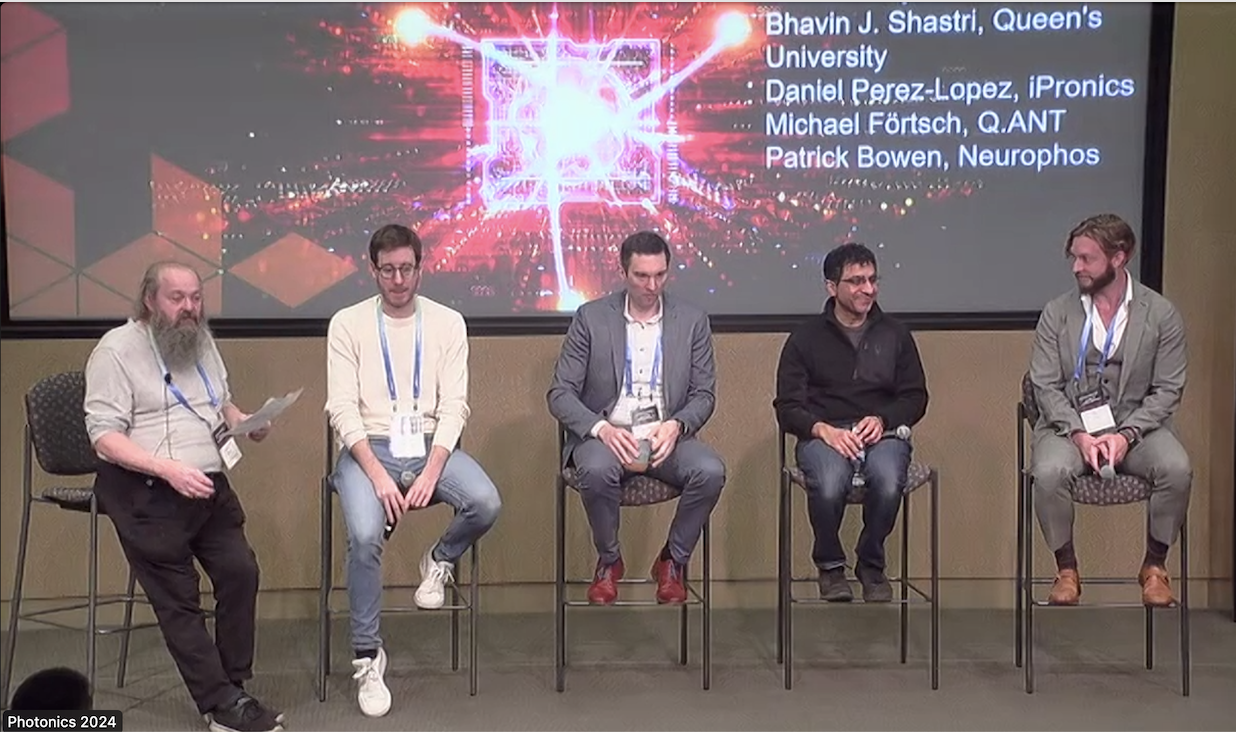
Cadence recently held an event to dig into the emerging world of photonic computing. Called The Rise of Photonic Computing, it was a two-day event held in San Jose on February 7th and 8th. The first day of the event was also accessible virtually. I attended a panel discussion on the topic – more to come on that. The day delivered a rich set of presentations from industry and academic experts intended to help you tackle many of your design challenges. Some of this material will be available for replay in late February. Please check back here for the link. Now let’s look at a spirited panel discussion that asked the question, Photonic computing – now or science fiction?
The Panelists
There is a photo at the top of this post of the panel Moving left to right:
Gilles Lamant, distinguished engineer at Cadence moderated the panel. Gilles has worked at Cadence for almost 31 years. He is a Virtuoso platform architect and a design methodology consultant in San Jose, Moscow, Tokyo and Burlington Vermont. Gilles has a deep understanding of system design and kept the panel moving in some very interesting directions.
Dr. Daniel Perez-Lopez, CTO and co-founder of iPronics, a company that aims to expand photonics processing to all the layers of the industry with its SmartLight processors. The company is headquartered in Valencia, Spain.
Dr. Michael Förtsch, Founder and CEO of Q.ANT, a company that develops quantum sensors and photonic chips and processors for quantum computing based on its Quantum Photonic Framework. The company is headquartered in Stuttgart, Germany.
Dr. Bahvin Shastri, Assistant Professor, Engineering & Applied Physics, Centre for Nanophotonics, Queen’s University, located in Kingston, Ontario, Canada. Bhavin presented the keynote address right before the panel on Neuromorphic Photonic Computing, Classical to Quantum.
Dr. Patrick Bowen, CEO of and co-founder of Neurophos, a company that is pioneering a revolutionary approach to AI computation, leveraging the vast potential of light. Neurophos leverages metamaterials in its work, they are based in Austin, Texas.
That’s quite a lineup of intriguing worldwide startups and advanced researchers. The conversation covered a lot of topics, insights and predictions. Watch for the replay to hear the whole story. In the meantime, here are some takeaways…
The Commentary
Gilles observed that some of the companies on the panel look like traditional players in the sense that they use existing materials and fabs to build their products but others are innovating in the materials domain and therefore need to build the factory and the product. This observation highlights the fact that photonic computing is indeed a new field. The players that are building fabrication capabilities may become vertically integrated suppliers or they may become pure-play fab partners to others. It’s a dynamic worth watching.
Bahvin commented on this topic from an academic research perspective. His point of view was that, if you can get it done with mainstream silicon photonics, that’s what you do. However, new and exotic materials research is opening up possibilities that are not attainable with silicon and so advanced work like that will be important to realize the broader potential of the technology.
Other discussions on this topic pointed out that the massive compute demands of advanced AI algorithms simply cannot fit the size or power envelope required using silicon. New materials will be the only way forward. In fact, some examples were given as to how challenging applications such as transformers can be re-modeled in a way that makes them more appropriate for the analog domain offered by photonic processing.
An interesting observation was made regarding newly minted PhD students. What if part of the dissertation was to develop a pitch about the invention and try it with a VC. This would bring a reality check to the invention process – how does the invention contribute to the real world? I thought that was an interesting idea.
Here is a good quote from the discussion: “Fifty years of Moore’s Law and we are still at the stage where we haven’t found an efficient computer to simulate nature.” This is a problem that photonic computing has a chance to solve.
Gilles ended the panel with a question regarding when photonic computing would be fully mainstream. 10 years, 20 years? No one was willing to answer. We are at the beginning of a very exciting time.
To Learn More
Much of the first day of the event will be available for replay, including this panel. Check back here around the end of February. In the meantime, you can check out what Cadence has to offer for photonic design here. The panel Photonic computing – now or science fiction? didn’t necessarily answer the question, but it did deliver a lot of detail and insights to ponder for the future.
Share this post via:




Comments
There are no comments yet.
You must register or log in to view/post comments.